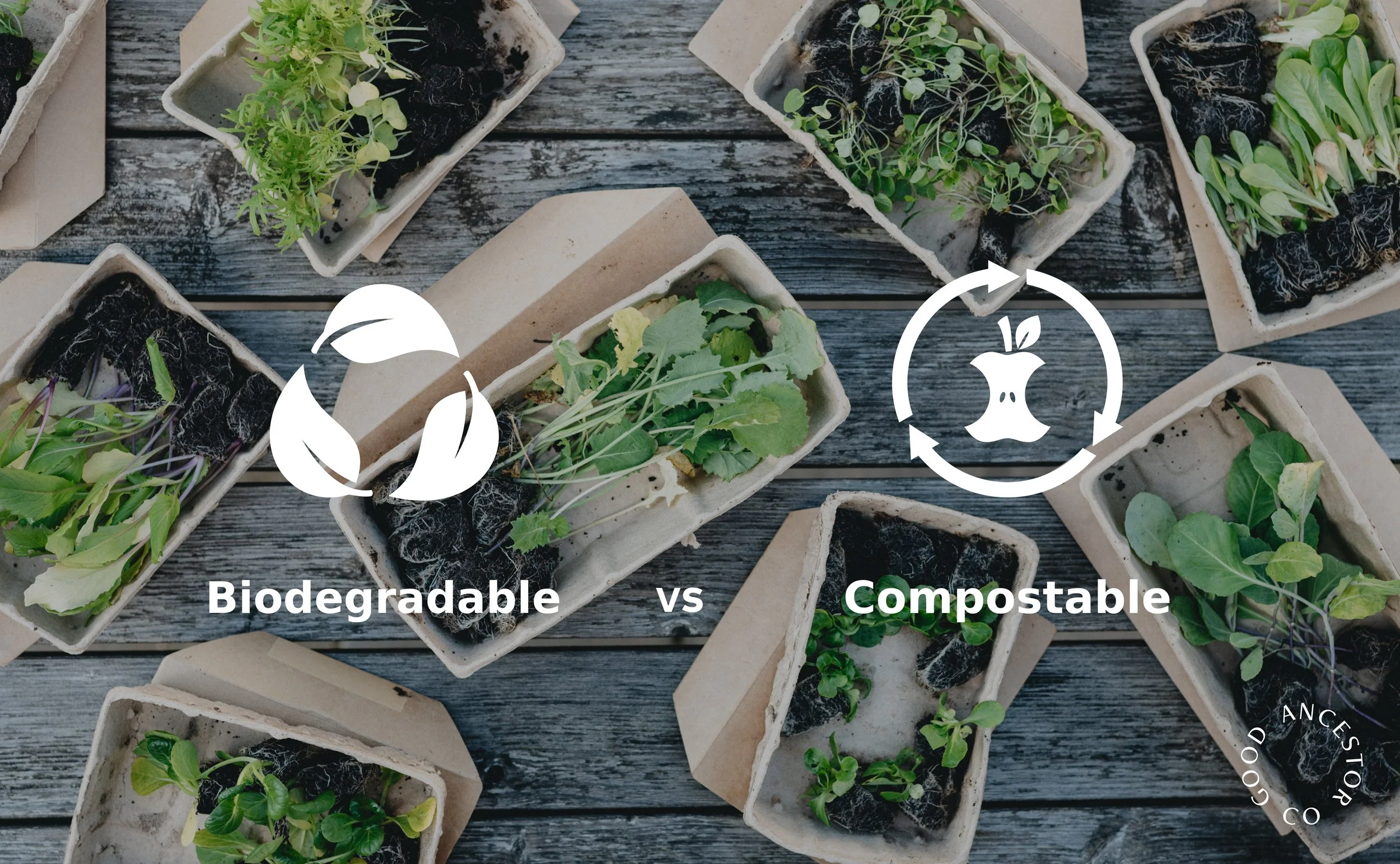Biodegradable Vs Compostable
4 Min Read
As you all know, one of the main concepts of being a good ancestor is to leave it better than you found it. Whether that is picking up plastic that washes up on shore, grabbing a can you find under a bush on a hike or what you bring into your house. To be successful at making sure your ecological footprint is as small as it can be there is a lot to decode. Have no fear! We are here to help.
Biodegradable and compostable are both terms used to describe materials that can break down over time, but there is a subtle difference between the two:
Biodegradable (according to Webster) is when a substance or object is capable of being decomposed by bacteria or other living organisms. It refers to a product breaking down into basic fundamental and natural elements, carbon dioxide, and water vapor by organisms like bacteria and fungi. Biodegradable materials are capable of breaking down naturally and decomposing into simpler substances through the action of microorganisms (such as bacteria or fungi) over time. However, the term "biodegradable" does not specify the duration it takes for the material to break down, and it does not necessarily guarantee complete breakdown or absence of harmful residues. Not all biodegradable items are equal as some biodegradable materials can still leave behind small traces or fragments that may persist in the environment for longer timelines. The big question is how fast can a product do this since, almost everything is biodegradable. Conventional plastic is biodegradable but it will take hundreds of thousands of years for it and most other petroleum based products to biodegrade. As a global society we need to demand better from brands, producers to move to a circular product cycle. One where the product produced returns to its natural elements within a reasonable timeline. What is reasonable? That is also a slippery slope and very opinion centric per individual. It is often product specific but a general rule of thumb is 1 year. Considering the options today, the best way to achieve this is to purchase products made from sustainable materials and/or plant by-products.
Here are some easy swaps you can make to have a lighter impact.
Whether it is your next BBQ’s, dog walk, birthday or just a backyard picnic give some of these great alternatives a try.
Compostable materials are a subset of biodegradable materials. They are specifically designed to break down under specific composting conditions, usually in industrial composting facilities or how we run our home composting system. Compostable materials not only break down into simpler substances through the action of microorganisms but also result in a nutrient-rich compost that can be used as a soil amendment. Composting provides the ideal environment, including proper temperature, moisture, and aeration, to facilitate the breakdown of the material into compost.
If you start to home compost have a look at the best composting vessels made your yours truly. These Compost bins are locally sourced and purpose built for minimum impact and maximum compost management while never sacrificing aesthetics. They are easily filled, manage odor and quickly cleaned for effortless use while you make garden gold for your plants.
In summary, while both biodegradable and compostable materials can break down, compostable materials are designed to break down in specific composting conditions and produce compost, whereas biodegradable materials may break down naturally over time but without the guarantee of resulting in a nutrient-rich compost. It's important to note that the specific definitions and standards for biodegradability and compostability can vary between countries and organizations, so it's always advisable to look for certification labels or specific guidelines to understand the capabilities and limitations of a product.
If you want to make the transition even faster by using your purchase power to convert to a more sustainable marketplace I would suggest the company Grove.co or similar that only showcase and sell products that are already vetted for ecology throughout their lifecycle. The simple act of signing up and diverting as much of your non-renewable product purchases to sustainable, refillable and compostable alternatives the better. Each dollar spent is a vote. Use your money for a greener world.

